Grow cantaloupe bigger sweeter – isn’t that the dream of every home gardener who’s ever tasted a bland, watery melon from the grocery store? I know it’s *my* dream! For centuries, cantaloupe has been a symbol of summer’s bounty, enjoyed by cultures around the world, from ancient Egypt to modern-day picnics. But let’s be honest, achieving that perfect, juicy, intensely sweet cantaloupe in your own backyard can feel like a real challenge.
That’s where these DIY tricks and hacks come in! Forget those disappointing store-bought melons. I’m going to share some simple, yet effective, techniques that will help you grow cantaloupe bigger sweeter than you ever thought possible. We’ll delve into everything from soil preparation and watering strategies to pruning tips and pollination secrets.
Why do you need these tricks? Because life’s too short for mediocre cantaloupe! Imagine biting into a homegrown melon bursting with flavor, the sweetness intensified by your own care and attention. These DIY methods are designed to empower you, the home gardener, to take control and cultivate cantaloupe that will truly impress your family and friends. So, let’s get started and unlock the secrets to cantaloupe success!
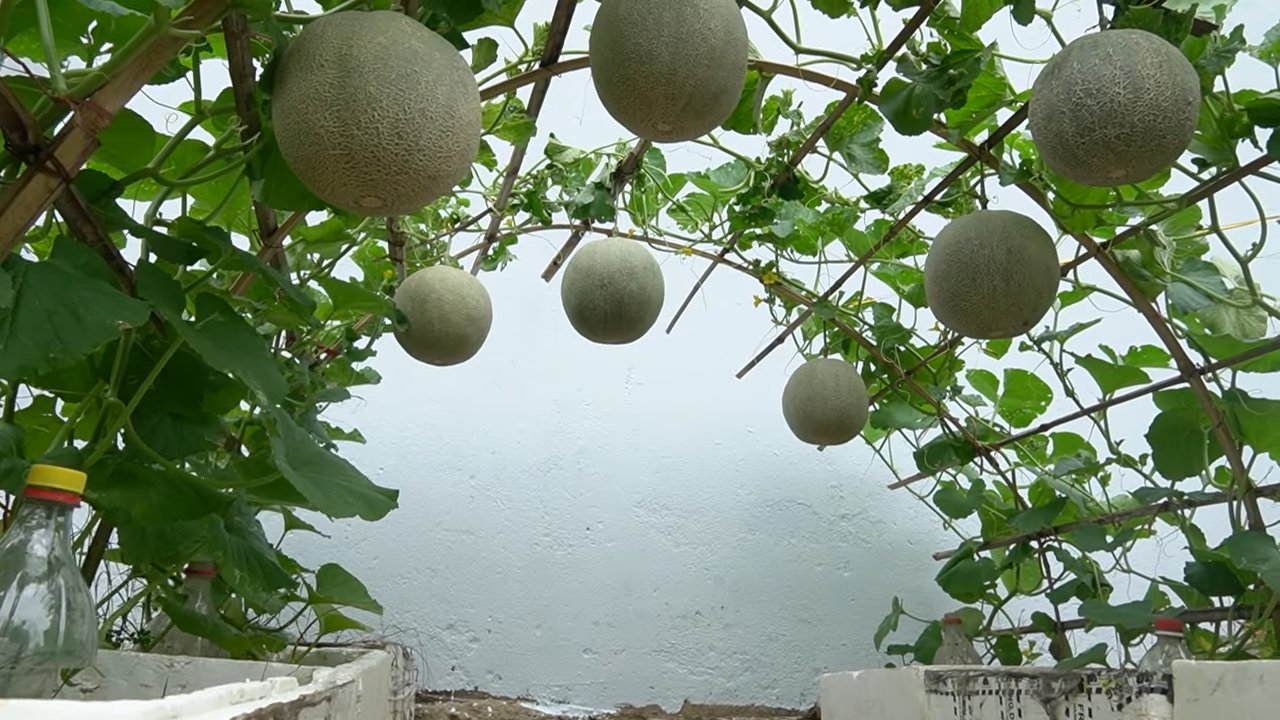
How to Grow Bigger and Sweeter Cantaloupe Melons: My DIY Guide
Hey everyone! I love cantaloupe melons, and I’ve made it my mission to grow the biggest and sweetest melons possible. Over the years, I’ve learned a few tricks that I’d like to share with you. Don’t worry, it’s not as hard as it sounds! With a little love and the right techniques, you too can soon be harvesting juicy, aromatic cantaloupe melons. Let’s get started!
The Basics: What Cantaloupe Melons Love
Before we get into the details, it’s important to understand what cantaloupe melons really need to thrive. Here are the key points:
- Sun, Sun, Sun: Cantaloupes are sun worshippers. They need at least 6-8 hours of direct sunlight per day. The more sun, the better!
- Well-draining soil: Waterlogging is the enemy! Cantaloupes need well-draining soil that is rich in organic matter.
- Regular watering: They like it moist, but not wet. Make sure the soil stays evenly moist, especially during fruit development.
- Warmth: Cantaloupes love warmth. They thrive best at temperatures between 21°C and 35°C (70°F and 95°F).
- Nutrients: They are hungry! Cantaloupes need a good supply of nutrients, especially during the growth and fruiting phases.
Phase 1: Preparation is Everything
Preparation is the key to success. The better you prepare your garden, the better your cantaloupes will grow.
- Choose the right location: Find a sunny spot in your garden that gets at least 6-8 hours of direct sunlight per day. Make sure the soil is well-draining.
- Prepare the soil: Dig over the soil and remove all stones and weeds. Improve the soil with compost or well-rotted manure. This ensures good drainage and provides essential nutrients. I personally love working in a generous amount of compost – my melons thank me for it every year!
- Test the soil’s pH: Cantaloupes prefer a slightly acidic to neutral pH (between 6.0 and 7.0). You can buy a soil test kit at your garden center to check the pH. If the pH is too high, you can lower it with sulfur. If it’s too low, you can raise it with lime.
- Build hills or mounds: Cantaloupes grow best on hills or mounds. This improves drainage and warms the soil faster. I usually build hills about 30 cm (12 inches) high and 60 cm (24 inches) in diameter.
- Mulch the soil: Mulching helps to keep the soil moist, suppress weeds, and regulate soil temperature. I like to use straw or black plastic sheeting as mulch. Black plastic also warms the soil, which is particularly advantageous in cooler climates.
Phase 2: Sowing and Starting
Now we get down to business! Sowing and starting are crucial for a good beginning.
- Choose the right variety: There are many different cantaloupe varieties. Choose one that is suitable for your climate and soil conditions. Some popular varieties are ‘Hales Best Jumbo’, ‘Athena’, and ‘Ambrosia’. I’ve always had good experiences with ‘Hales Best Jumbo’ – the melons are huge and super sweet!
- Start the seeds indoors (optional): To get a head start, you can sow the seeds indoors 4-6 weeks before the last frost. Use seedling pots with good seed-starting mix. Keep the soil moist and place the pots in a warm, sunny spot.
- Direct sow outdoors: If you live in a warm climate or the danger of frost has passed, you can sow the seeds directly outdoors. Sow the seeds about 2.5 cm (1 inch) deep in the prepared hills or mounds.
- Keep the soil moist: Water the seeds regularly until they germinate. Germination usually takes 7-10 days.
- Thin the seedlings: When the seedlings are about 5-7 cm (2-3 inches) tall, thin them to 2-3 plants per hill. Choose the strongest and healthiest plants.
Phase 3: Care and Fertilizing
Proper care and fertilization are crucial for growth and fruit development.
- Regular watering: Water the plants regularly, especially during fruit development. Make sure the soil stays evenly moist, but not wet. Avoid watering the leaves, as this can promote fungal diseases. I prefer to water directly at the base of the plant.
- Fertilizing: Cantaloupes are hungry! Fertilize the plants every 2-3 weeks with a balanced fertilizer (e.g., 10-10-10). You can also use organic fertilizer like compost tea or fish emulsion. I like to fertilize my melons with compost tea – it gives them an extra boost!
- Weed control: Keep the area around the plants weed-free. Weeds compete with the melons for nutrients and water.
- Pruning (optional): Pruning the plants can help promote fruit development and increase the size of the melons. Remove side shoots that do not have flowers or fruit. I only prune my plants lightly to improve air circulation.
- Protection from pests and diseases: Watch out for pests like aphids, cucumber beetles, and spider mites. Control them as needed with insecticides or natural methods like neem oil. Also watch for diseases like powdery mildew and Fusarium wilt. Ensure good air circulation and avoid watering the leaves to prevent diseases.
Phase 4: The Sweet Deal: How to Make Your Melons Sweeter
Here come the tricks that make all the difference!
- Water less just before harvest: About 1-2 weeks before the expected harvest, I reduce the amount of water. This concentrates the sugar in the fruit and makes it sweeter. But be careful: don’t let them dry out completely!
- Potassium is your friend: Potassium promotes sugar formation. I additionally fertilize my plants during fruiting with a potassium-rich fertilizer (e.g., wood ash). Wood ash is a natural source of potassium and a real secret tip!
- Sunbathing: Turn the melons regularly so they get sun on all sides. This ensures even ripening and sweetness.
- The molasses trick: Another trick I’ve tried is watering with a diluted molasses solution (1 tablespoon of molasses per liter of water) during fruit development. Molasses contains sugar and trace elements that can promote the growth and sweetness of the melons.
Phase 5: Harvest Time!
The moment you’ve been waiting for!
The “Slip Test”: The best way to determine if a cantaloupe is ripe is the “slip test.”
Look for signs of ripeness: Cantaloupe melons are ripe when they give off a sweet fragrance, the rind turns slightly yellowish, and the stem begins to separate easily from the fruit.
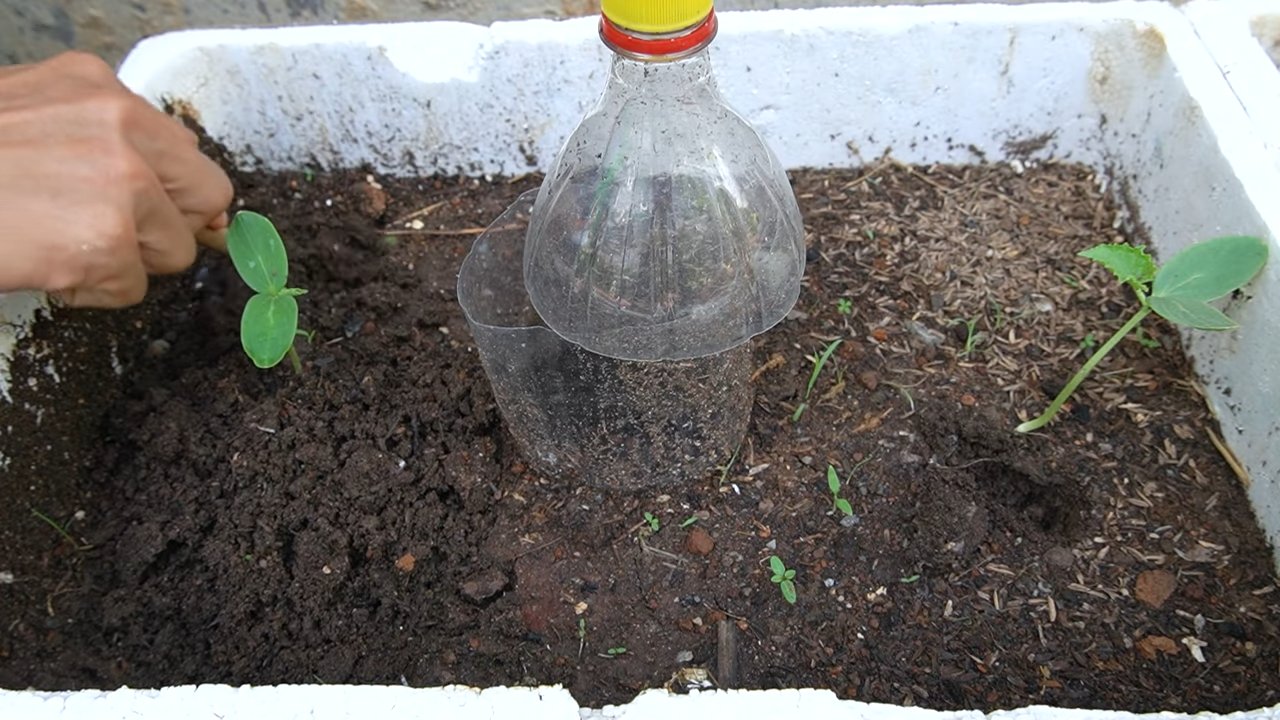
Conclusion
So, there you have it! Unlocking the secret to growing cantaloupe bigger and sweeter isn’t about magic; it’s about understanding the plant’s needs and giving it a little boost with this simple, yet effective DIY trick. We’ve explored how strategic pruning, targeted fertilization, and consistent watering can transform your cantaloupe harvest from ordinary to extraordinary.
Why is this a must-try? Because who doesn’t want a cantaloupe that bursts with flavor and is large enough to share (or not, we won’t judge!)? Beyond the sheer enjoyment of a superior fruit, this method empowers you to take control of your garden’s output. You’re not just passively waiting for nature to take its course; you’re actively shaping the outcome, resulting in a more rewarding gardening experience.
But the beauty of gardening lies in experimentation. Feel free to adapt this DIY trick to your specific environment and preferences. For instance, if you live in an area with particularly hot summers, consider providing your cantaloupes with some afternoon shade to prevent sunscald. You could also experiment with different types of organic fertilizers, such as compost tea or fish emulsion, to see which yields the best results for your soil. Another variation could involve companion planting. Marigolds, for example, are known to deter pests, while basil can improve the flavor of nearby fruits.
Don’t be afraid to get your hands dirty and try different approaches. The key is to observe your plants closely and adjust your techniques accordingly. Remember, every garden is unique, and what works for one person may not work for another.
We are confident that by implementing these techniques, you’ll be well on your way to harvesting cantaloupes that are not only bigger but also significantly sweeter. Imagine the satisfaction of biting into a juicy, flavorful cantaloupe that you grew yourself, knowing that you played a direct role in its exceptional quality.
Now, it’s your turn! We wholeheartedly encourage you to try this DIY trick and witness the transformation firsthand. Document your progress, take pictures, and most importantly, share your experiences with us. Let us know what worked, what didn’t, and any variations you discovered along the way. Your insights can help other gardeners achieve their cantaloupe-growing dreams.
Join our community of passionate gardeners and let’s learn and grow together. Share your cantaloupe success stories on our social media pages using #BiggerSweeterCantaloupe or leave a comment below. We can’t wait to hear about your amazing harvests! Happy gardening!
Frequently Asked Questions (FAQ)
What kind of fertilizer should I use for growing cantaloupe bigger and sweeter?
The best fertilizer for cantaloupe is one that is rich in phosphorus and potassium, as these nutrients are essential for fruit development and sweetness. A balanced fertilizer with an NPK ratio of 5-10-10 or 6-12-12 is a good starting point. However, it’s crucial to amend your soil based on a soil test. This will tell you exactly what nutrients your soil is lacking. Organic options like bone meal (for phosphorus) and wood ash (for potassium) are also excellent choices. Avoid over-fertilizing with nitrogen, as this can lead to excessive foliage growth at the expense of fruit production. Apply fertilizer according to the package instructions, and consider side-dressing your plants with compost tea every few weeks to provide a gentle boost of nutrients.
How often should I water my cantaloupe plants?
Cantaloupe plants need consistent watering, especially during fruit development. Water deeply and regularly, aiming for about 1-2 inches of water per week, depending on the weather and soil conditions. The best way to determine if your plants need water is to check the soil moisture. Stick your finger about an inch into the soil; if it feels dry, it’s time to water. Avoid overhead watering, as this can promote fungal diseases. Instead, use a soaker hose or drip irrigation to deliver water directly to the roots. Reduce watering slightly as the fruits ripen, as this can help concentrate the sugars and improve sweetness.
When should I start pruning my cantaloupe vines?
Pruning cantaloupe vines is essential for directing the plant’s energy towards fruit production. Start pruning when the plant has developed several true leaves and the vines are beginning to spread. Remove any suckers (small shoots that grow from the base of the plant) as well as any yellowing or damaged leaves. Once the plant starts producing fruits, focus on pruning the non-fruit-bearing vines to encourage the plant to send more nutrients to the developing cantaloupes. Be careful not to remove too much foliage at once, as this can stress the plant.
How do I know when my cantaloupe is ripe?
Determining when a cantaloupe is ripe can be tricky, but there are several telltale signs to look for. First, check the stem. A ripe cantaloupe will easily slip from the vine with a gentle tug, leaving a smooth, shallow indentation. This is known as the “full slip” stage. The skin of a ripe cantaloupe will also change color, typically from green to a tan or yellowish hue. The area where the cantaloupe rests on the ground (the “ground spot”) should also turn from white to a creamy yellow. Finally, a ripe cantaloupe will have a sweet, musky aroma. If you’re unsure, it’s always better to err on the side of caution and wait a day or two longer.
What are some common pests and diseases that affect cantaloupe plants, and how can I prevent them?
Cantaloupe plants are susceptible to several pests and diseases, including aphids, squash bugs, vine borers, powdery mildew, and fusarium wilt. To prevent these problems, start by choosing disease-resistant varieties. Practice good garden hygiene by removing any plant debris and weeds that can harbor pests and diseases. Use row covers to protect young plants from pests. Encourage beneficial insects, such as ladybugs and lacewings, which prey on aphids and other pests. If you notice signs of disease, treat your plants with an appropriate fungicide or insecticide, following the manufacturer’s instructions carefully. Crop rotation can also help prevent soilborne diseases from building up.
Can I grow cantaloupe in containers?
Yes, you can grow cantaloupe in containers, but you’ll need to choose a large container (at least 20 gallons) and provide adequate support for the vines. Select a dwarf or bush variety of cantaloupe that is better suited for container gardening. Use a high-quality potting mix and ensure that the container has good drainage. Water regularly and fertilize every few weeks. Provide a trellis or other support for the vines to climb on. Place the container in a sunny location that receives at least 6-8 hours of sunlight per day.
How can I improve the sweetness of my cantaloupe?
Besides proper fertilization and watering, there are a few other things you can do to improve the sweetness of your cantaloupe. First, ensure that your plants receive plenty of sunlight. Sunlight is essential for photosynthesis, which is the process by which plants produce sugars. Avoid overwatering as the fruits ripen, as this can dilute the sugars. You can also try pinching off the ends of the vines a few weeks before harvest to encourage the plant to focus its energy on ripening the fruits. Finally, be patient and wait until the cantaloupe is fully ripe before harvesting.
What if my cantaloupe plants are producing flowers but no fruit?
This can be frustrating, but there are several possible reasons why your cantaloupe plants are not setting fruit. One common cause is a lack of pollination. Cantaloupe plants rely on bees and other pollinators to transfer pollen from the male flowers to the female flowers. If there are not enough pollinators in your area, you may need to hand-pollinate the flowers yourself. Another possible cause is temperature stress. Cantaloupe plants prefer warm temperatures (between 70°F and 90°F). If the temperatures are too hot or too cold, the plants may not set fruit. Finally, nutrient deficiencies can also prevent fruit set. Ensure that your plants are receiving adequate amounts of phosphorus and potassium.


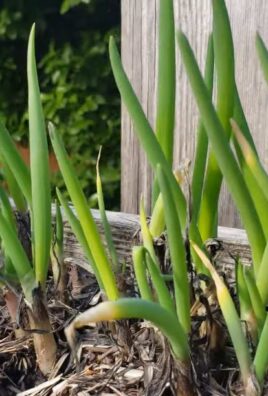
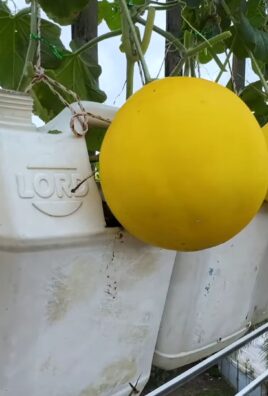
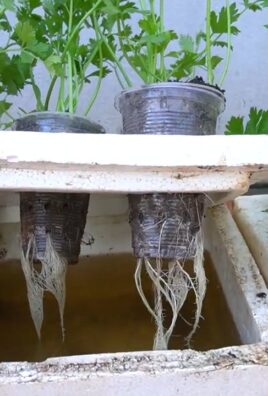
Leave a Comment